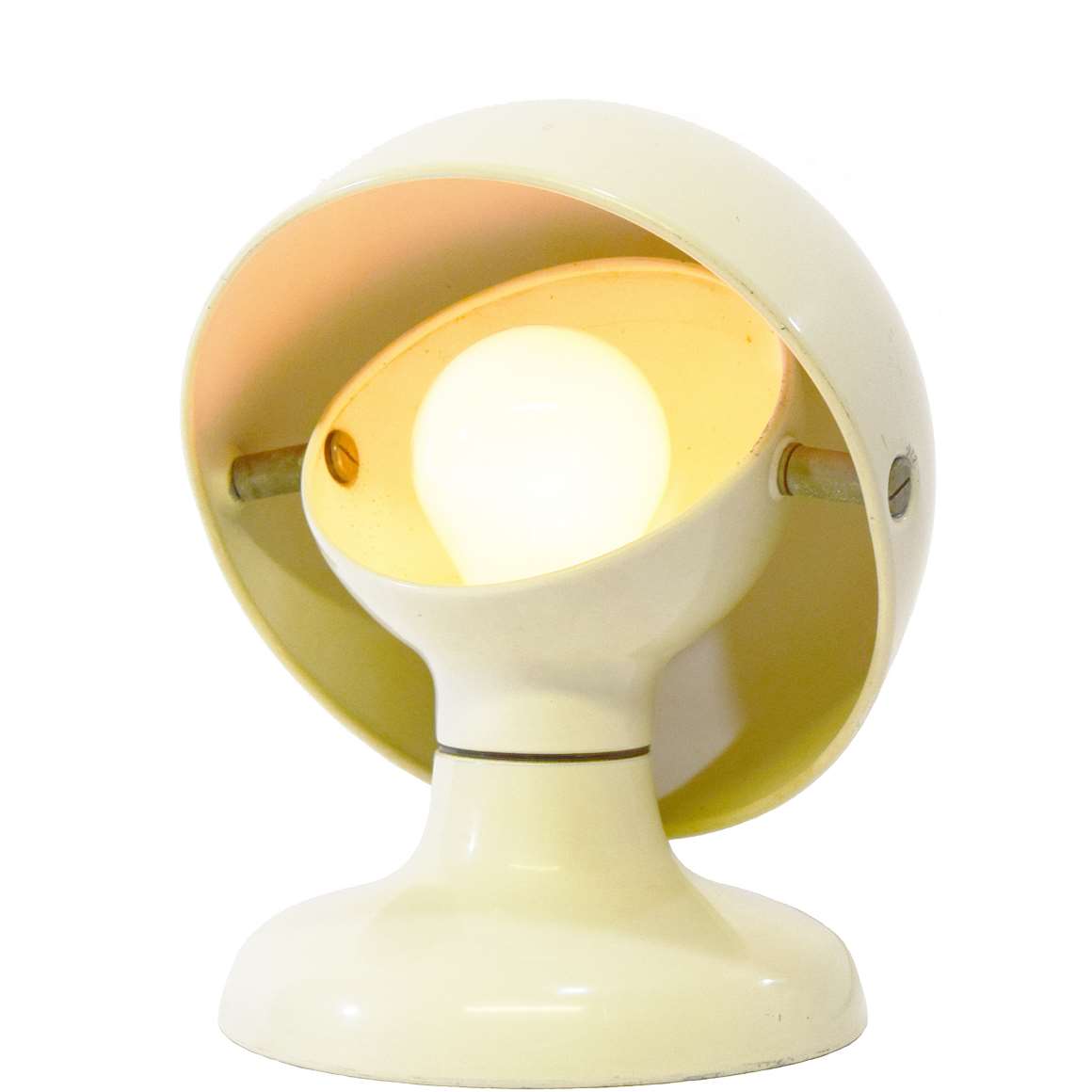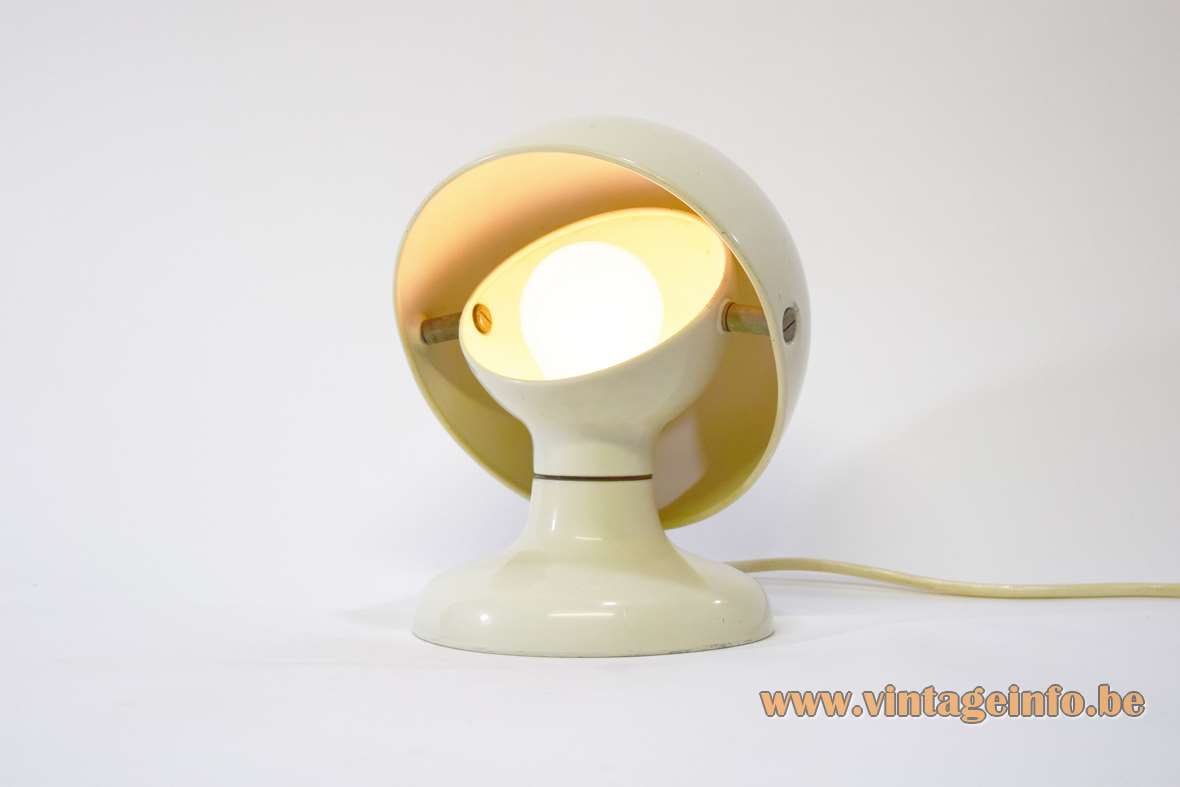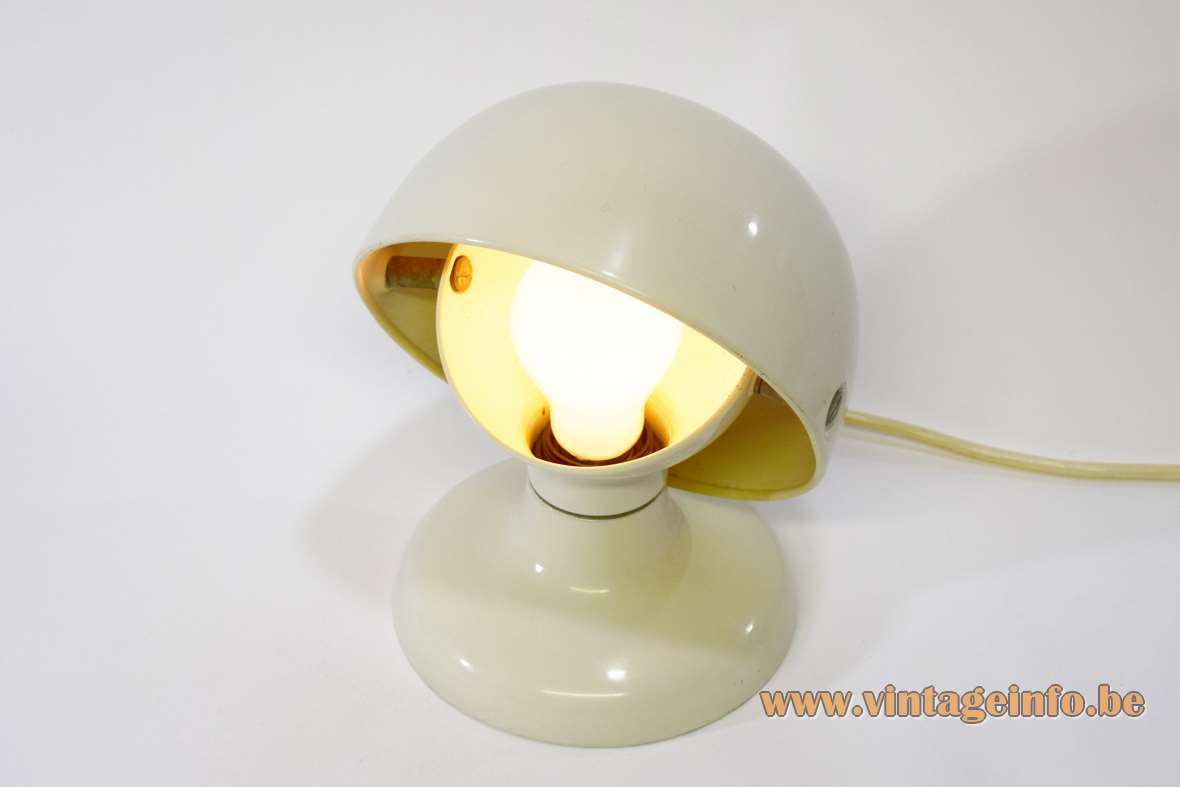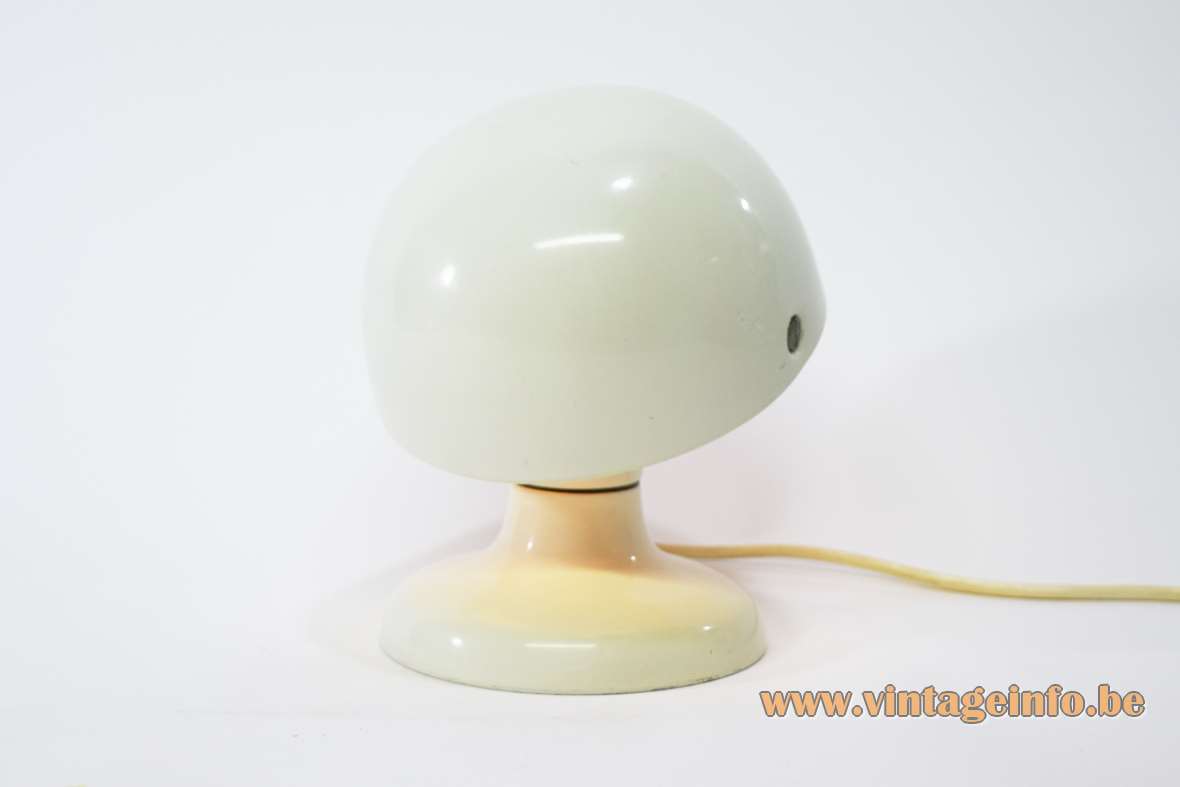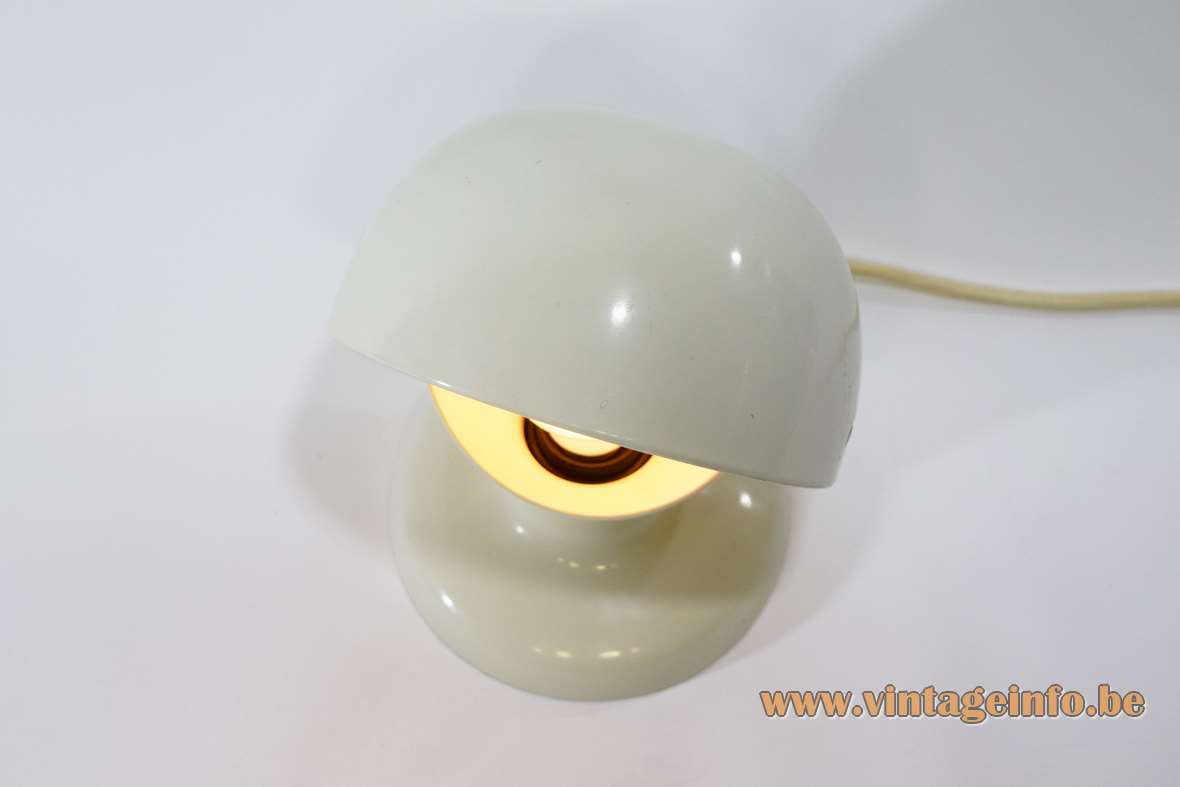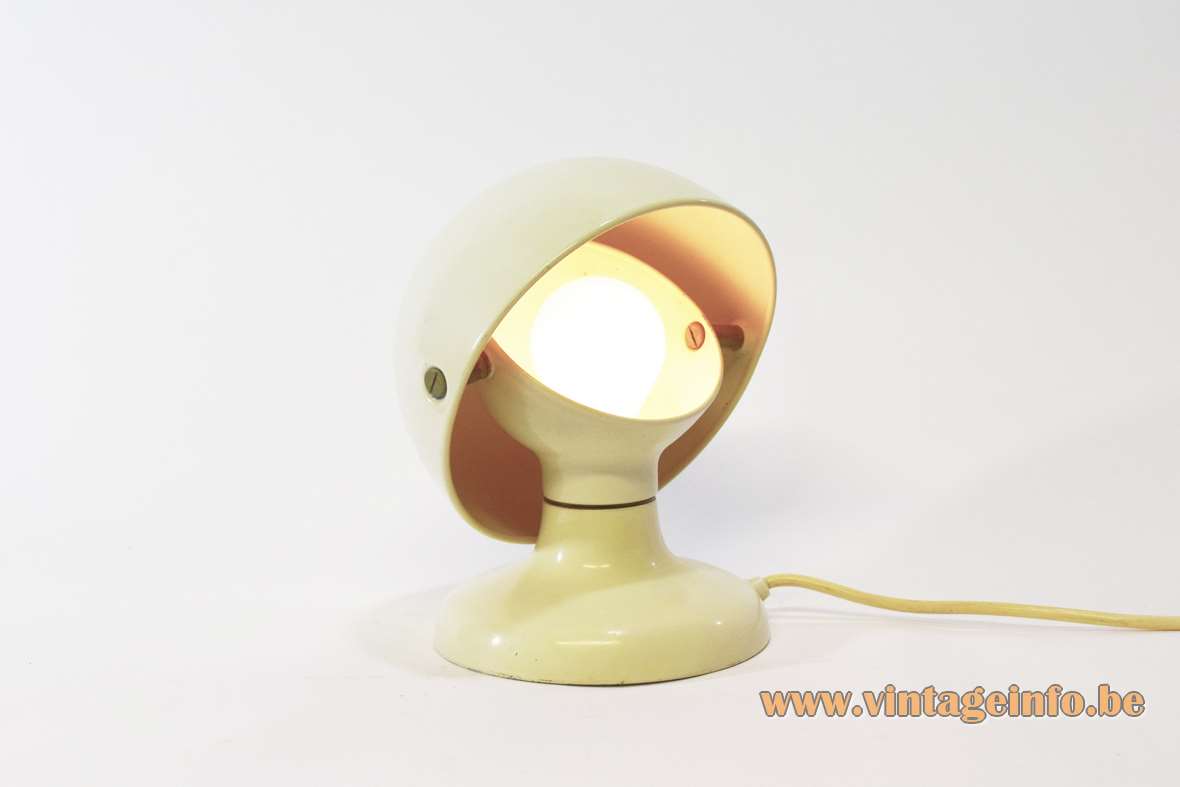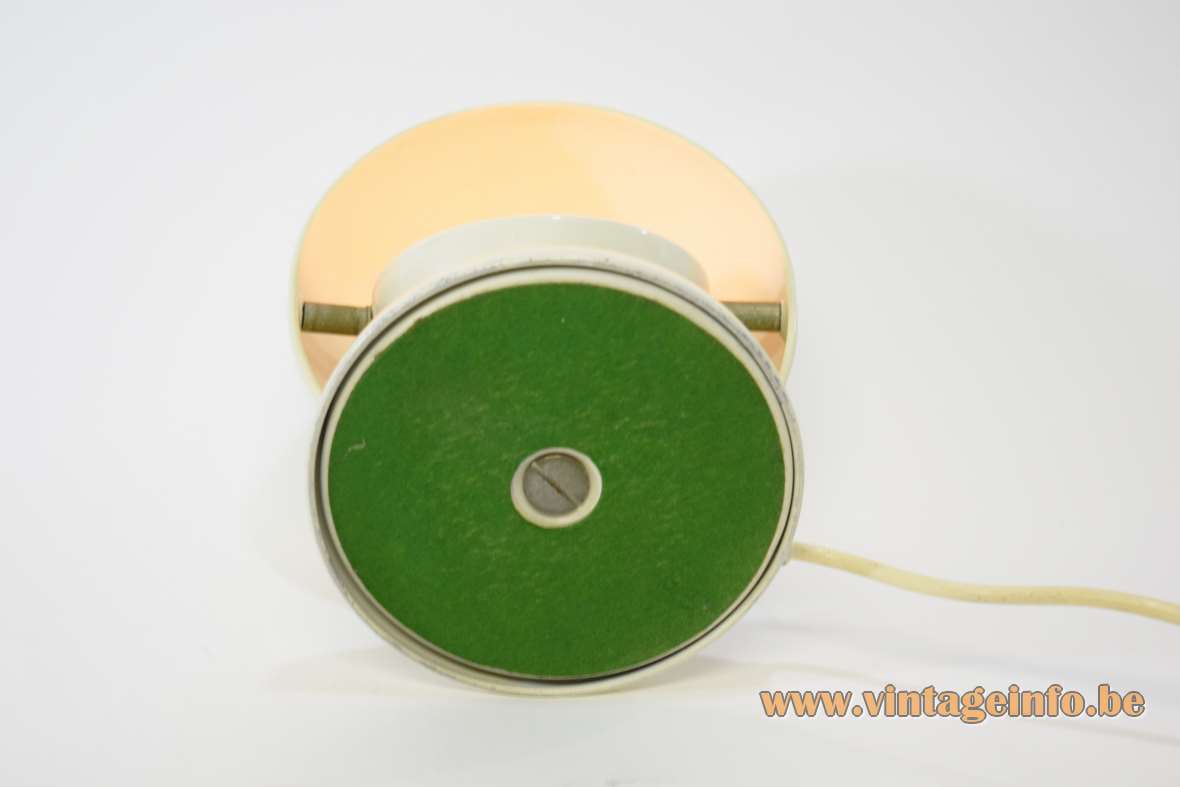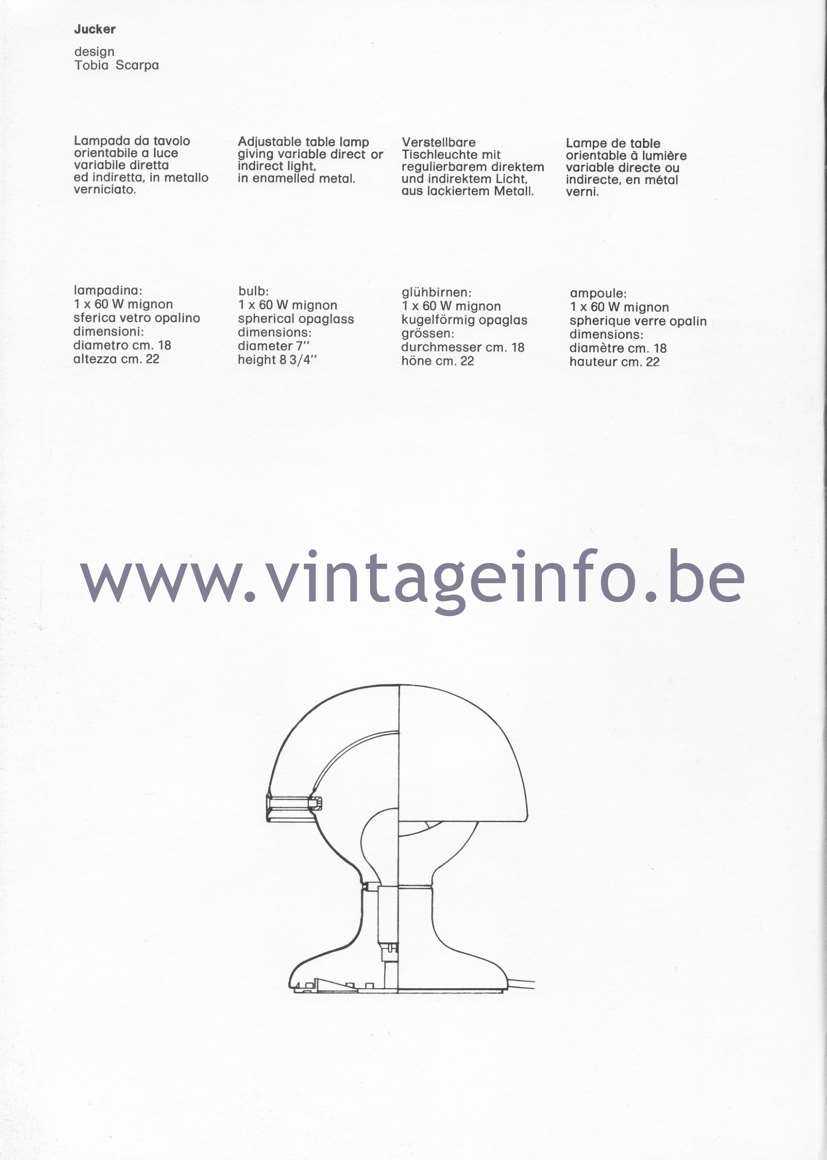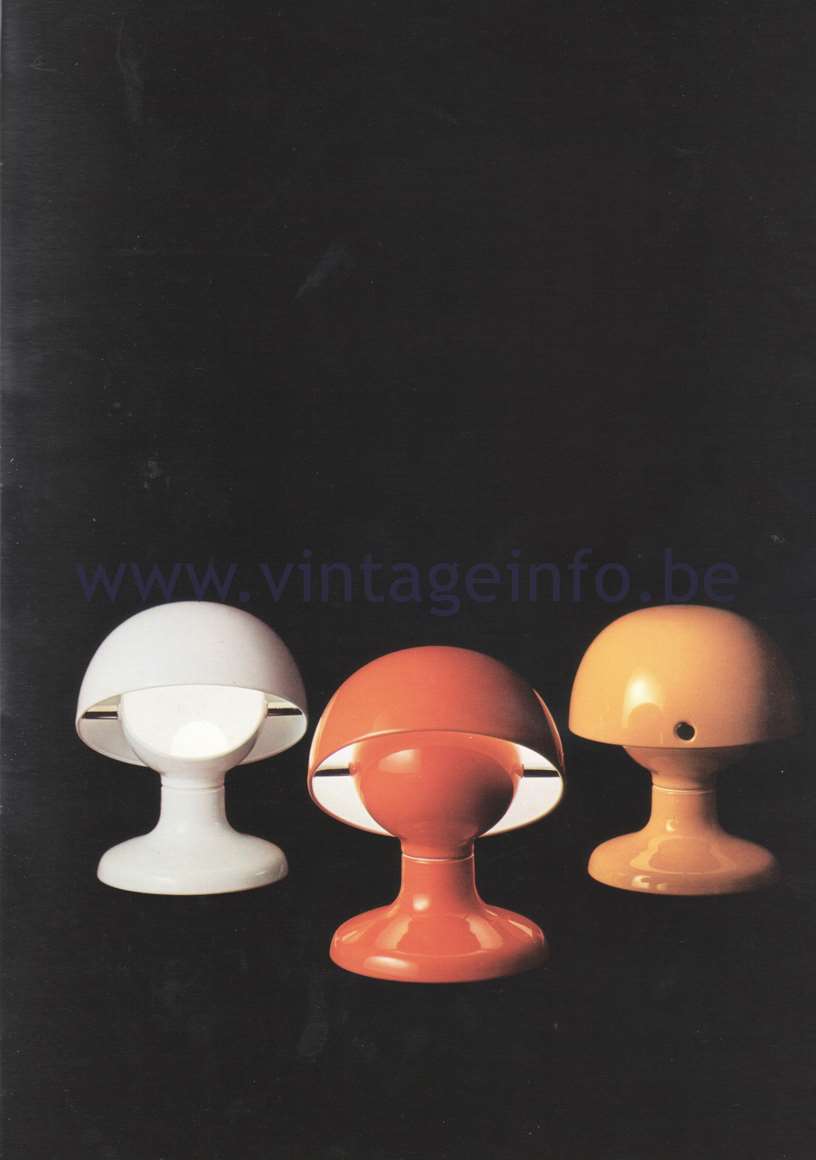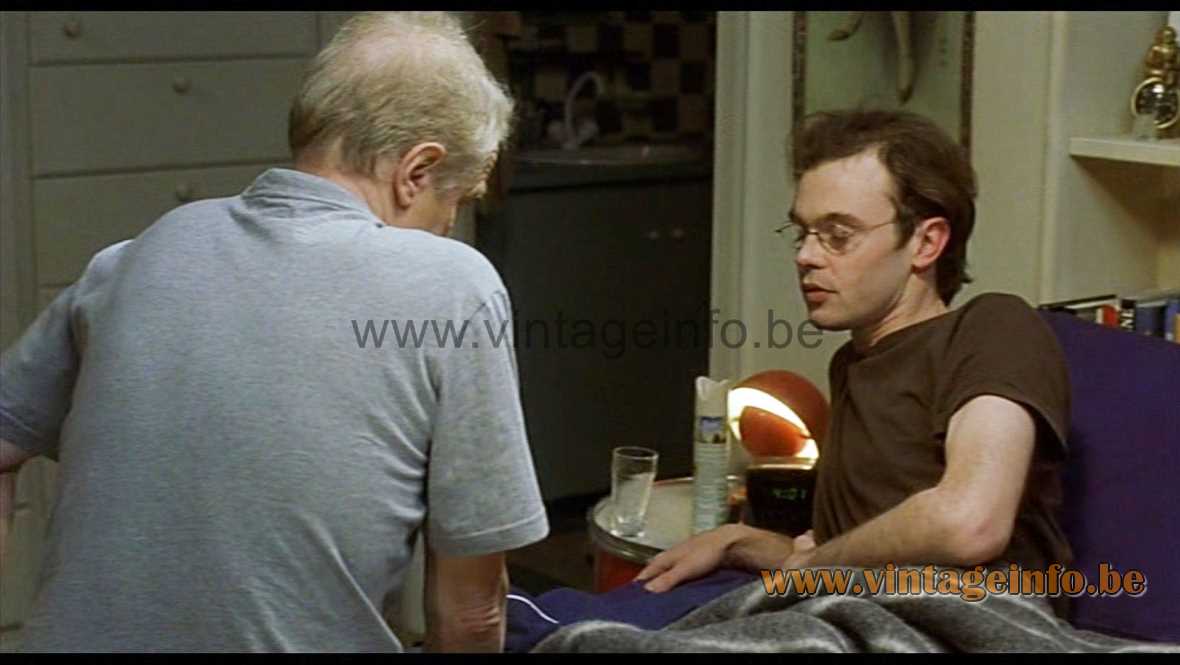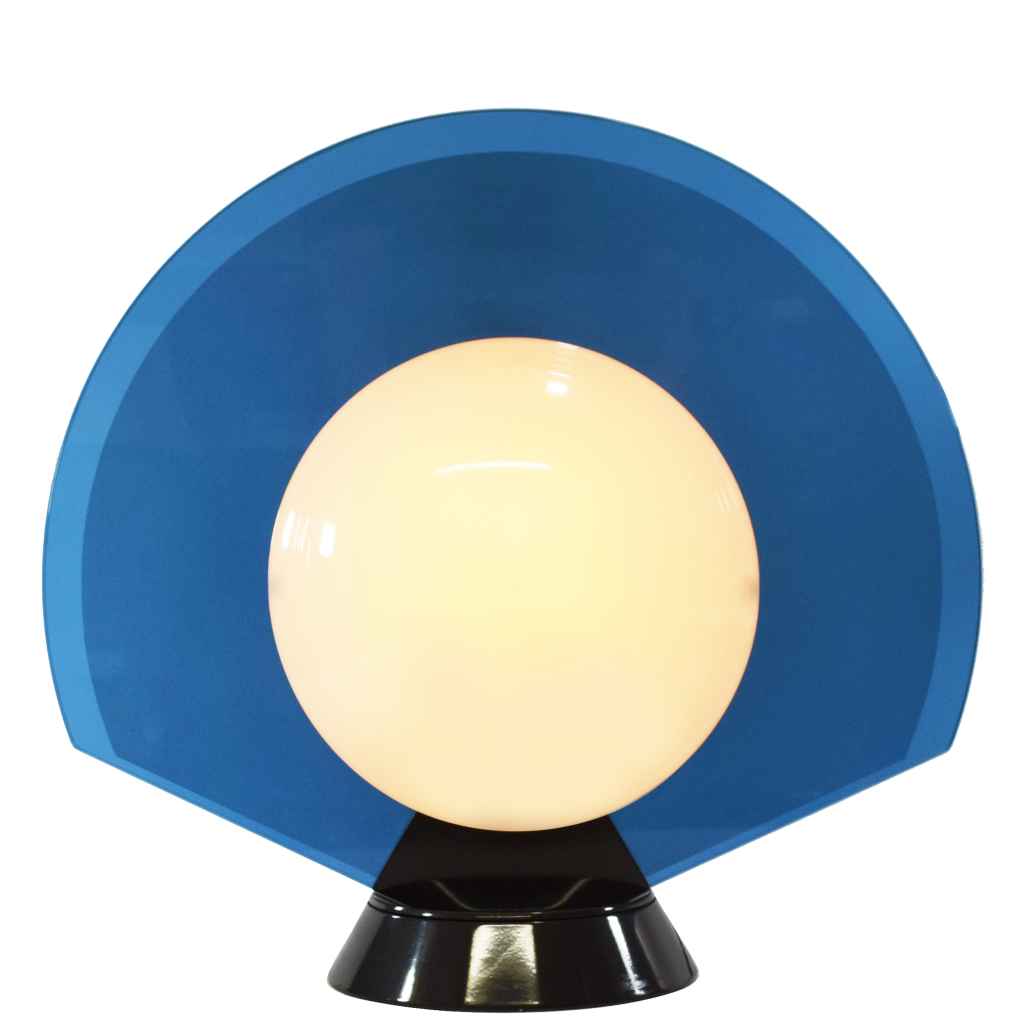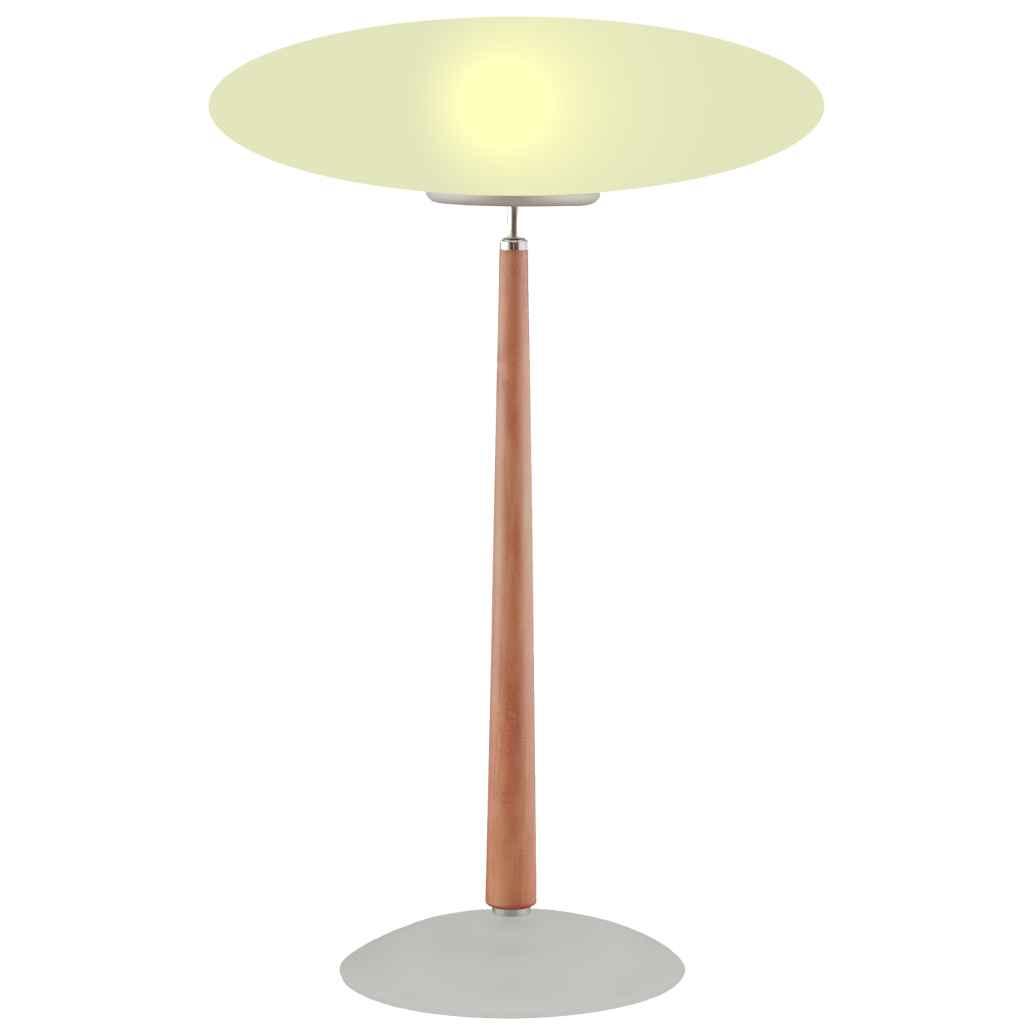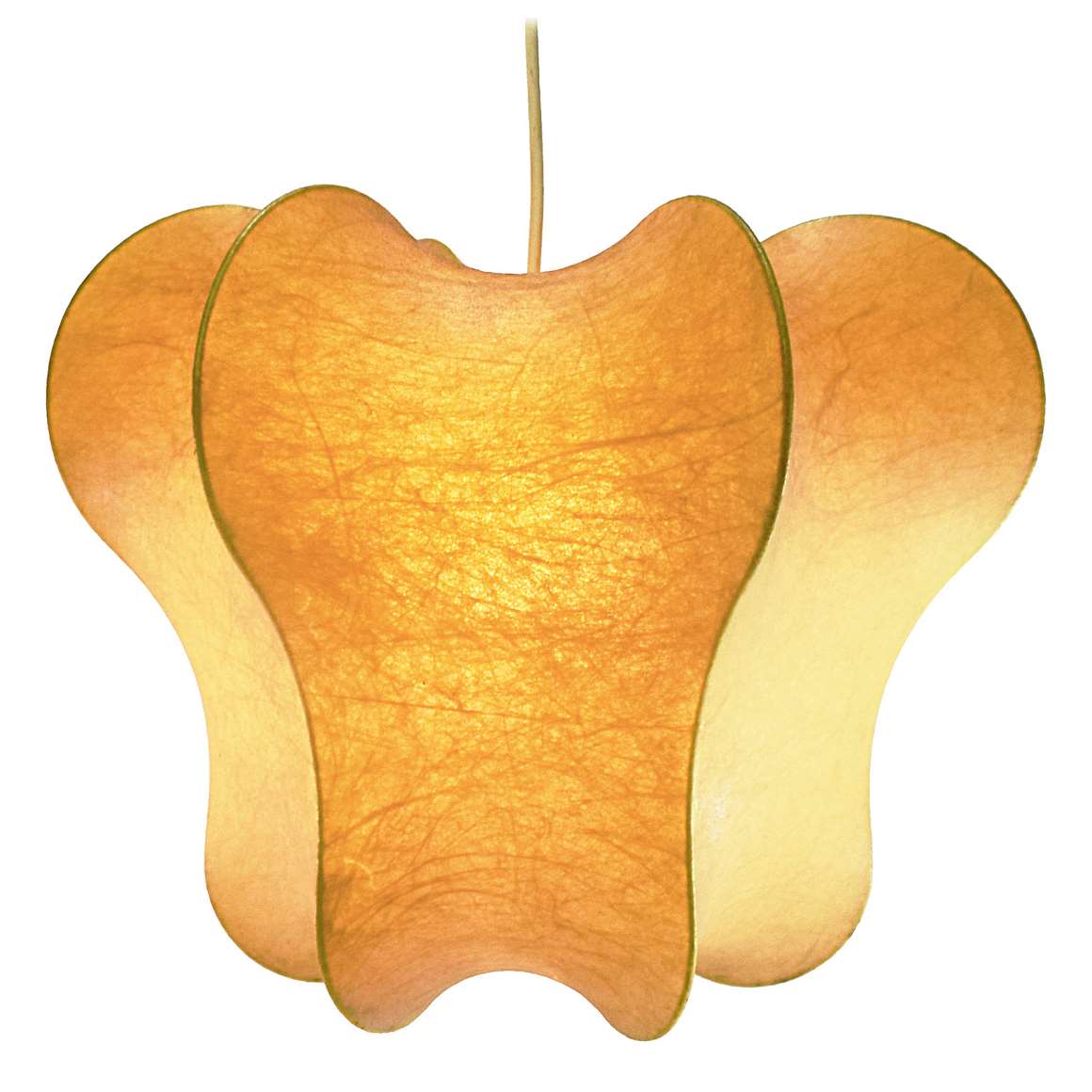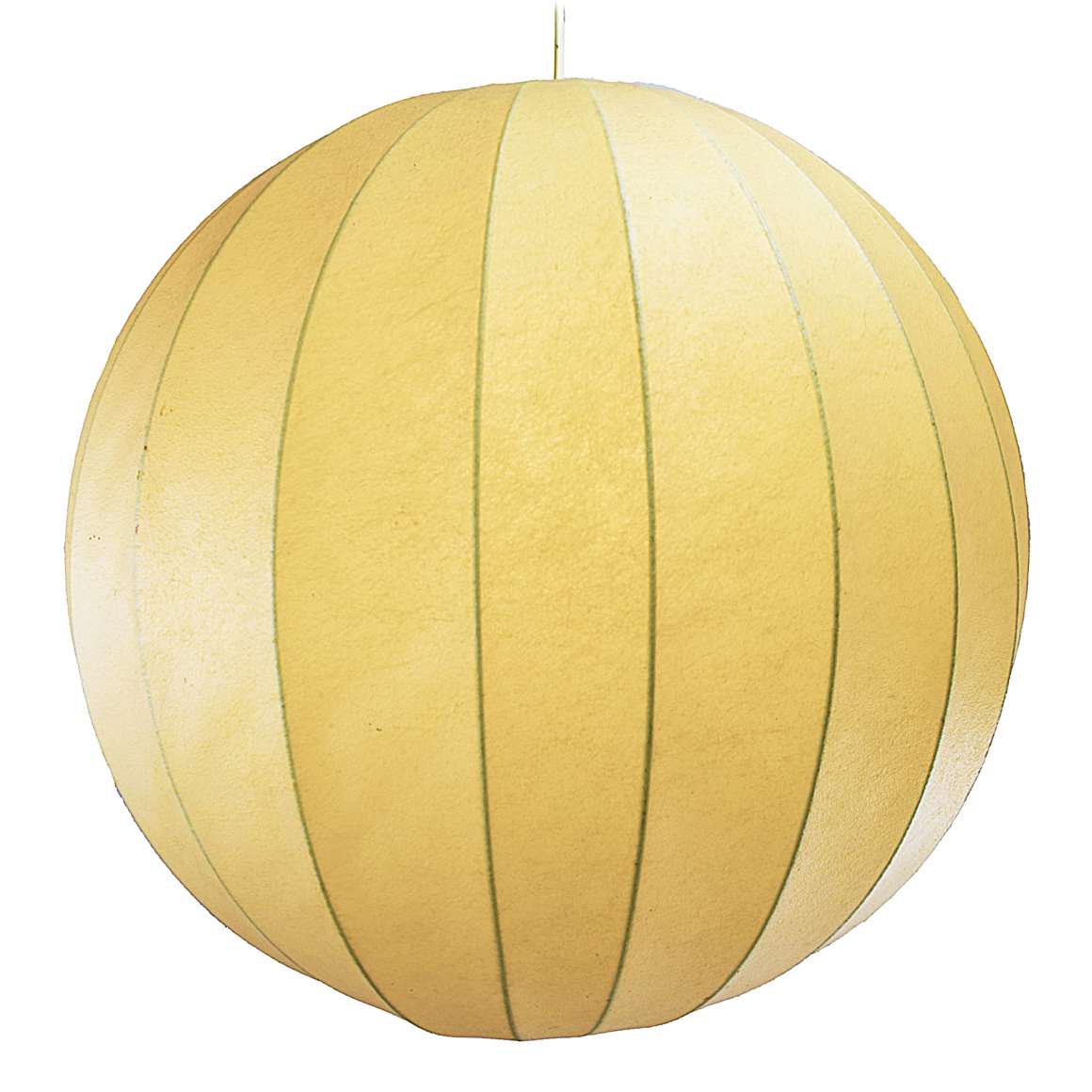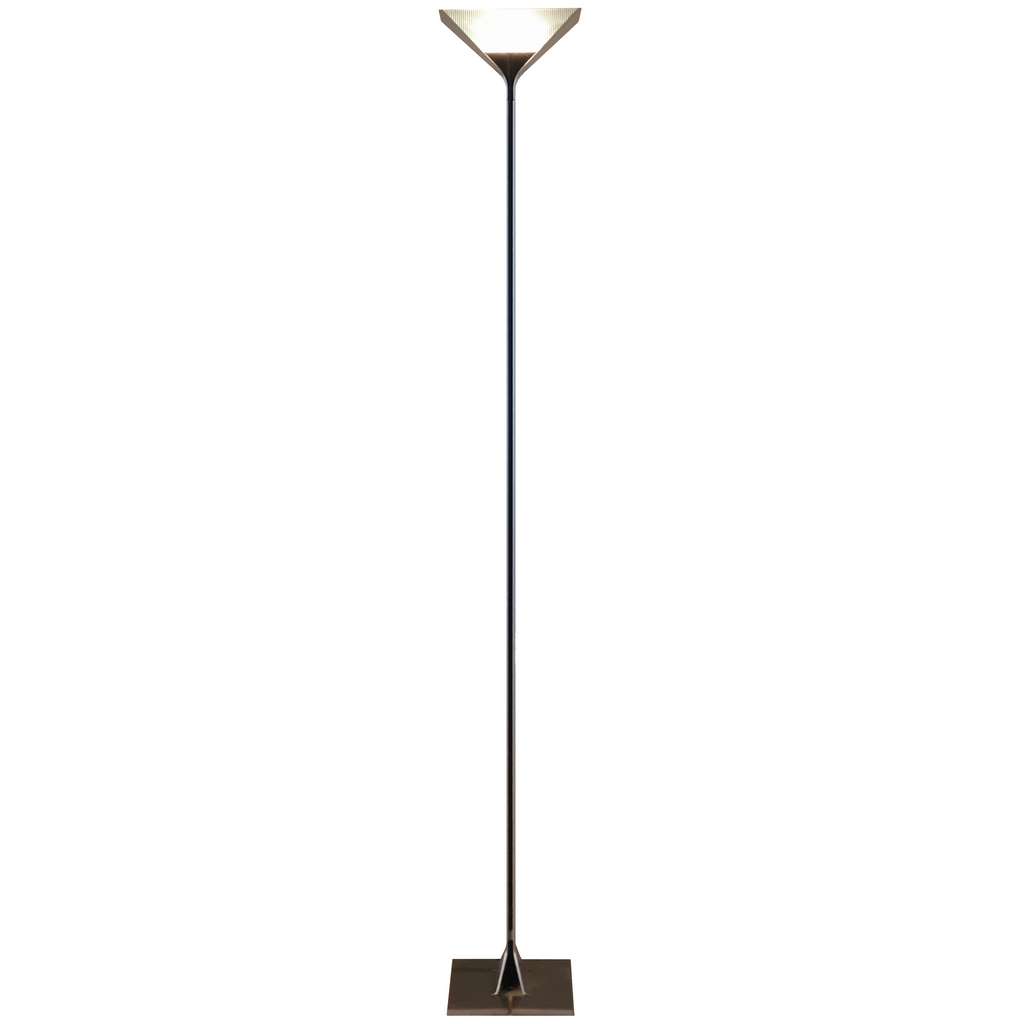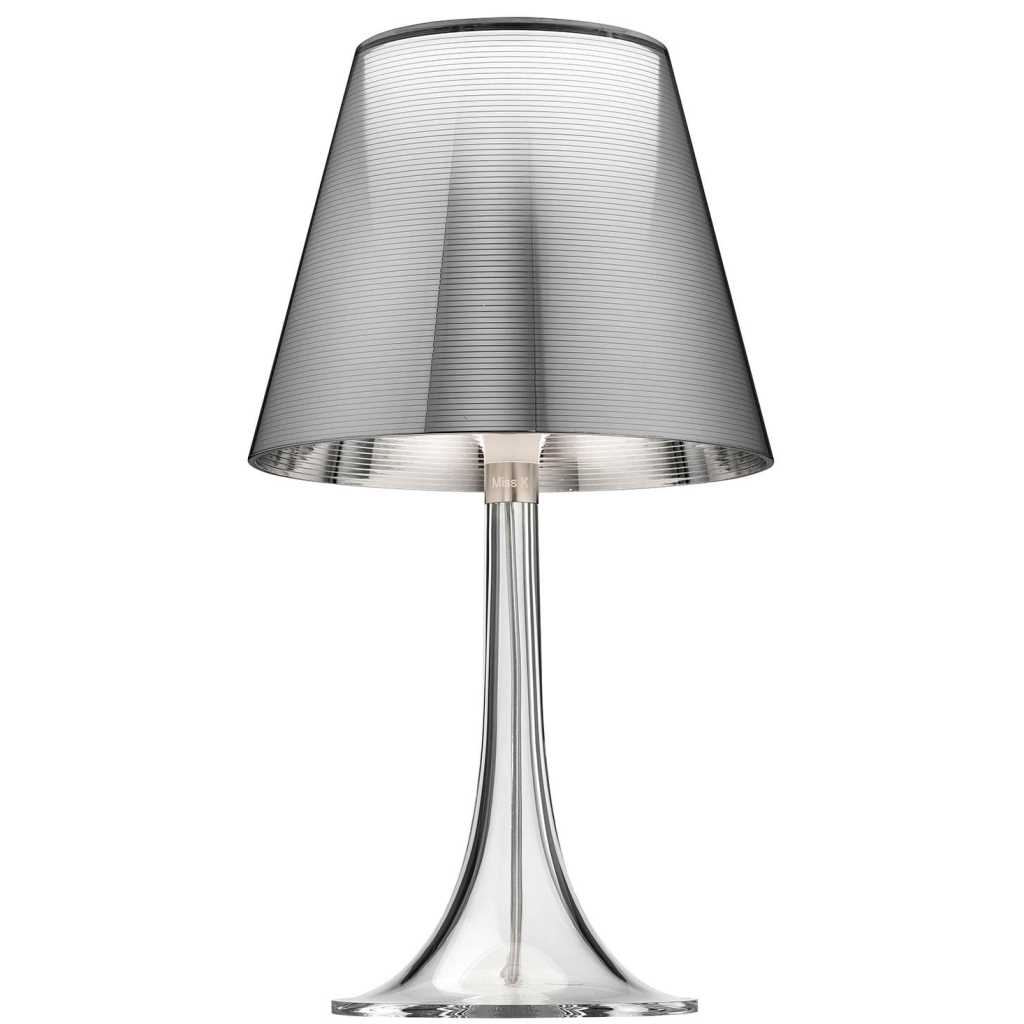FLOS Jucker table lamp – Catalogue Pictures
Lamps In The Movies!
A FLOS Jucker table lamp was used as a set decoration in the French black comedy film Tanguy from 2001. Starring Sabine Azéma, André Dussollier and Éric Berger. Many beautiful lamps appear in this movie. A sequel was made in 2019. It is named Tanguy Le Retour (Tanguy Is Back).
Links and sources (external links open in a new window)
Afra and Tobia Scarpa – Wikipedia
Università Iuav di Venezia – Wikipedia
Tobia Scarpa – the FLOS website
FLOS philosophy/history – the Flos website
Lichtstudio Eisenkeil – Facebook
School of Industrial Design in Venice
Istituto Europeo di Design – Wikipedia
FLOS Jucker Table Lamp
Materials: Round white painted aluminium base. Green felt on the bottom of the base. White painted aluminium lampshade. Revolving and tiltable lampshade. Nickel-plated ornamental brass screws. Some nickel-plated parts. Bakelite E27 socket.
Height: 22 cm / 8.66”
Width: ∅ 17,5 cm / 6.88”
Base: ∅ 15 cm / 5.90”
Electricity: 1 bulb E27, 1 x 60 watt maximum, 110/220 volt.
Any type of light bulb can be used. Not a specific one preferred. For this setup a white light bulb was used.
Period: 1960s, 1970s, 1980s – Mid-Century Modern.
Designer: Afra and Tobia Scarpa.
Manufacturer: FLOS Spa, Via Angelo Faini, 2 – 25073 Bovezzo (Brescia), Italy.
Other versions: The FLOS Jucker table lamp was made in many colours. First editions such as this one have a green or red felt bottom. Later versions have a black plastic bottom in the base with the name of the lamp, the designer, FLOS and patent pending pressed in it. The most recent version has a black plastic bottom, but only with a sticker “FLOS made in Italy”. From 1968 on, a switch designed by Achille Castiglioni was used. It is the 450 switch produced by VLM Components also from Italy. The switch of this lamp was made by Norwegian company ELKO AS.
The Jucker table lamp was made for many years. You can find this eclipse style table lamp over here in the FLOS 1980s catalogue.
Tobia Scarpa
Tobia Scarpa was born in Venice, Italy in 1935. He is the son of the famous architect and designer Carlo Scarpa (1906-1978).
He earned a degree in architecture from the Università Iuav di Venezia in 1957. After his studies he worked for Venini (1957-1961) as a glass designer. Among other things, he designed the “Polyhedral ” chandelier for Venini.
Together with his wife Afra Bianchinn (born in 1937) they opened their own design office in Montebelluna, some 60 km (37.28 miles) from Venice.
Tobia Scarpa was commissioned, along with Pier Castiglioni, to design the first lamps for FLOS, including this lamp.
The couple designed for Gavina, B&B Italia, Cassina, Meritalia, Benneton, Fabbian, Veas, San Lorenzo, and many other companies. The most famous lamps they designed are the Nictea pendant lamp, the Biagio table lamp, the Nuvola pendant lamp, the Foglio wall lamp, the Butterlfy floor lamp, the Fantasma floor lamp, the Bilobo pendant lamp, the Nigritella pendant lamp, the Capalonga table lamp, to name the most important, all lamps designed for FLOS. The Papillona floor lamp for FLOS in 1973 was one of the first designs that uses the new halogen technology.
Afra and Tobia Scarpa also worked in commercial architecture and interior design. Some of their best-known work was for Benetton. Their collaboration with the clothing company began in 1964, with the design of the firm’s first factory. They are credited with several interiors for them including their prototype store in Italy.
Tobia has also been a lecturer at the School of Industrial Design in Venice (Istituto Europeo di Design).
Afra and Tobia Scarpa have won numerous awards for their designs and their projects are exhibited in museums worldwide.
FLOS
FLOS was founded in 1960. The company was born as a small workshop in Merano; as a place for experimenting and researching new materials, styles and functionalities. At a time when Dino Gavina and Cesare Cassina collaborated with an important importer of an innovative polymeric coating (Cocoon) produced in the United States: Arturo Eisenkeil. The Eisenkeil company is still located in Merano (or Meran), South-Tirol, Italy.
However, the first one who used this kind of material is George Nelson in 1947 for his Bubble pendant lamps. The technique had been developed for mothballing naval ships. George Nelson referred to these lamps as “one of those happy accidents which occur all too infrequently in the designer’s experience”.
Friedel Wauer
Friedel Wauer who is credited by FLOS for devising the technology of spraying the material onto iron frames, was inspired by the “self-wrapping” of a silk worm, hence the naming “cocoon ”. Wauer founded his own company: Cocoon-Leuchten International. More info about it over here on Vintageinfo.
The seventies were years of great creative and entrepreneurial ferment. The company rapidly grows and opens its first subsidiary in Germany. In 1974 FLOS acquires Arteluce, the company founded by Gino Sarfatti. As result, several models designed by Gino Sarfatti have been incorporated into the range of FLOS products.
Philippe Starck
In the 1980s a long and exclusive collaboration with Philippe Starck begins, which sheds light on a series of international successes also called cult objects such as the Ara and Miss Sissi table lamps. Numerous collaborations take place with other well-known designers, including Antonio Citterio, Konstantin Grcic, Jasper Morrison and Marc Newson. Other designers that worked for Flos during the years: Achille & Pier Giacomo Castiglioni, Mario Bellini, Sergio Gandini, Patricia Urqoiola, Vincent van Duysen, Nendo, Piero Lissoni, Johanna Grawunder, Edward Barber & Jay Osgerby, Michael Anstassiades, Fabio Lombardo, Marc Sadler and many others.
Perry A. King & Santiago Miranda, Gianfranco Frattini, Bruno Gecchelin, Cini Boeri, Ezio Didone, Paolo Rizzatto, and many others designed for Arteluce after the takeover by FLOS.
In the nineties, FLOS decided to create its own spin-off called Light Contract, a division specialized in the production of professional products and lighting systems for large commercial spaces.
Nowadays FLOS is still one of the leading companies in its sector.
